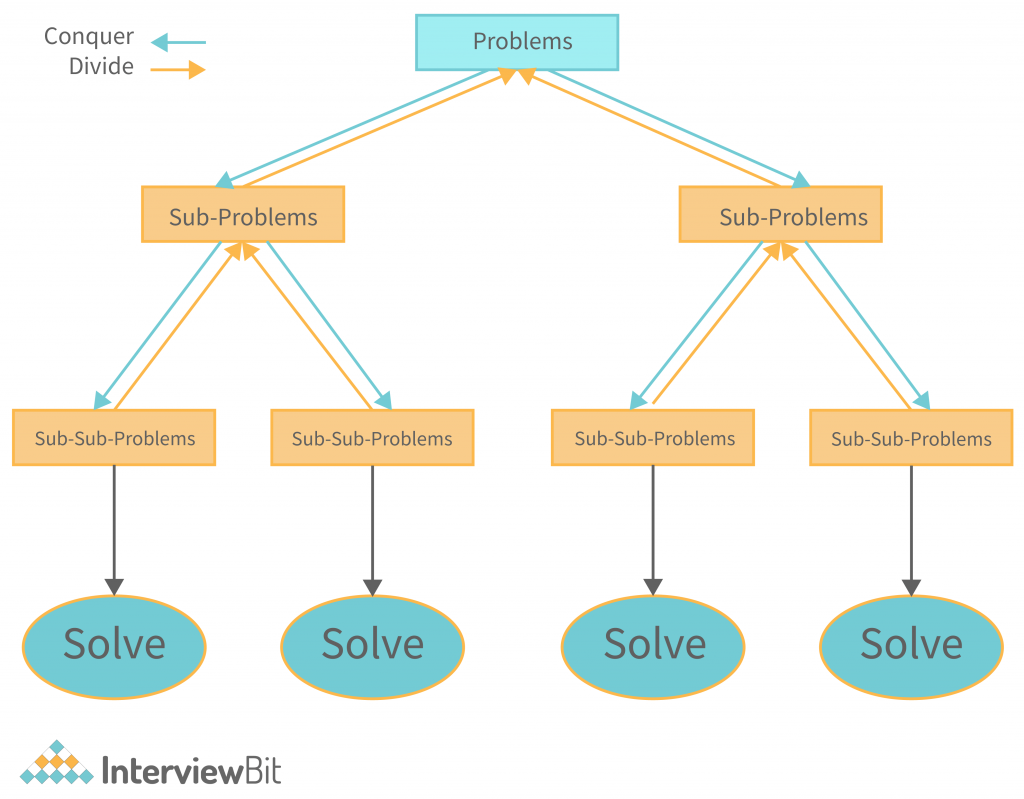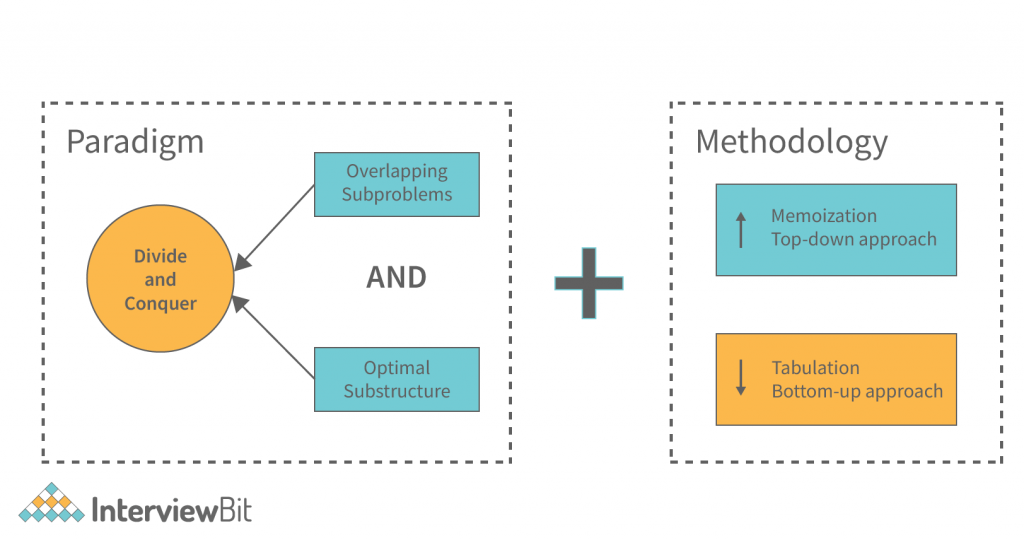- What is Divide and Conquer?
- What is Dynamic Programming?
- Key Differences
- Difference Between Divide and Conquer and Dynamic Programming
- Conclusion
- FAQs
A divide-and-conquer algorithm recursively splits a problem into two or more subproblems of similar or related types, until these become simple enough to solve directly. In computer programming, the dynamic programming technique helps to efficiently solve a variety of overlapping subproblems and optimal substructure property problems.
The difference between divide and conquer and dynamic programming is that the former is a method of dividing a problem into smaller parts and then solving each one separately, while the latter is a method of solving larger problems by breaking them down into smaller pieces. In other words, divide and conquer is about solving a single problem, while dynamic programming is about solving a series of problems. In both cases, the goal is to find a way to break down a problem into as many parts as possible and then solve each one separately. The main difference is that in divide and conquer, you break down the problem into smaller pieces and then solve each one separately, whereas, in dynamic programming, you break down the problem into smaller pieces and then solve each one together. The key point is to find a way to break down a problem into as many parts as possible and then solve each one separately. The main difference is that in divide and conquer, you break down the problem into smaller pieces and then solve each one separately, whereas, in dynamic programming, you break down the problem into smaller pieces and then solve each one together.
What is Divide and Conquer?
Divide and conquer is a programming technique that involves dividing a complex task into smaller, more manageable tasks. The goal is to break complex tasks into smaller, more manageable tasks that can be completed in parallel. The term comes from the military strategy of dividing and conquering an enemy’s territory. By dividing the task into smaller, more manageable tasks, the complexity of the task is reduced, and it becomes easier to complete. For example, if you’re programming a web application, you might divide the code into several modules that each perform a different part of the web application. Each module could be written in its own language, and each module could be tested independently to ensure that it works correctly before being merged into the main web application. This approach makes it easier to identify and fix problems before they become serious problems. Divide and conquer is a powerful programming technique that can be used to reduce complexity and increase efficiency in many situations.
Confused about your next job?
In 4 simple steps you can find your personalised career roadmap in Software development for FREE

What is Dynamic Programming?
Dynamic programming is a programming paradigm that aims to optimize a problem by considering the trade-offs between different approaches. The idea is to take a problem and break it down into smaller, easier-to-manage subproblems. Then, you can optimize each subproblem by considering the best possible solution for each subproblem. The result is a more efficient solution to the overall problem. The basic idea behind dynamic programming is that you can solve problems more efficiently by considering the trade-offs between different approaches. For example, if you have a problem with finding the minimum number of items in a list, you could consider all possible approaches and choose the one that minimizes the worst-case runtime. Dynamic programming is a powerful tool for optimization because it allows you to consider all possible solutions to a problem, which can lead to more efficient solutions. Dynamic programming is often used in computer science to optimize algorithms and solve difficult problems.

Key Differences
- The divide and conquer strategy is used to solve complicated problems by breaking them down into smaller problems that are still manageable. Dynamic programming is used to efficiently solve a range of overlapping subproblems and optimal structures.
- Divide and conquer is a form of recursive programming, whereas dynamic programming is non-recursive.
- When dealing with subdivisions and conquer, divide and conquer are independent of one another, whereas dynamic programming is interdependent.
- A divide and conquer problem is twice as time-consuming as a dynamic programming one because each issue is independently addressed. With dynamic programming, the answers to previous questions are used.
- Dynamic programming is faster than divide and conquer because it is more efficient.
- Matrix chain multiplication and binary search tree optimization are performed via dynamic programming, whilst merge sort, quick sort, and binary searching, matrixes use divide and conquer.
- Dynamic programming, as the name implies, is a dynamic process. It works on a certain idea of what is possible and what is impossible. It is not a step-by-step process. If the solution of a given subproblem is not possible, then the solution of the subproblems is impossible as well. Thus, the main problem is always solved.
- The main difference between divide and conquer and dynamic programming is that the first one works on the solution of a given problem, while the second one works on the solution of a certain subproblem.
Difference Between Divide and Conquer and Dynamic Programming
| Divide and Conquer | Dynamic Programming |
| Subproblems are solved independently, and finally all solutions are collected to arrive at the final answers. | Dynamic programming considers a large number of decision sequences and all the overlapping substances. |
| The divide and conquer strategy is slower than the dynamic programming approach. | The dynamic programming strategy is slower than the divide and conquer approach. |
| Maximize time for execution. | Reduce the amount of time spent on execution by consuming less time. |
| Recursive techniques are used in Divide and Conquer. | Non-Recursive techniques are used in Dynamic programming. |
| A top-down approach is used in Divide and Conquer. | In a dynamic programming solution, the bottom-up approach is used. |
| The problems that are part of a Divide and Conquer strategy are independent of each other. | A dynamic programming subproblem is dependent upon other sub-problems. |
| One of the best examples of this strategy is a binary search. | One of the best examples of this strategy is the longest common subsequence. |
| No results are stored when completing sub-problems. | The solutions to sub-problems are saved in the table. |
| Repeating tasks. | There is no repeating task. |
| At a specified point, the split input splits big problems into smaller ones. | Every point in the split input is processed. |
| The divide and conquer strategy is simple to solve. | A dynamic programming solution can sometimes be complicated and challenging to solve. |
| Not more than one decision sequence is generated. | More than one decision sequence is generated. |
Conclusion
Divide and conquer is a programming technique that involves dividing a problem into smaller pieces and then solving each piece individually. The main idea behind this technique is to break down complex problems into smaller, more manageable pieces that can be solved by a smaller number of people. By splitting a problem into smaller pieces, you can ensure that each person working on the problem is working on only a small piece of the overall problem. This approach can be used to solve many different types of problems, including those that involve data analysis, scheduling, and optimization. In contrast, dynamic programming is a programming technique that involves solving problems in a deterministic way. By using a deterministic approach, you can ensure that your program always runs in the same way, regardless of how much time or effort you put into it. In other words, using dynamic programming allows you to avoid the risk of making mistakes by not having to worry about how your program will perform in the future.
FAQs
Q: Is dynamic programming similar to divide and conquer?
A: Dynamic programming is the same concept, but it is executed in a different way in both cases. In dynamic programming, the algorithm is created to handle a problem as it arises, not as a previously planned plan. In divide and conquer, the strategy is to first divide an issue into smaller, controllable pieces and then tackle each piece as a separate problem.
Q: What are the advantages of the dynamic programming method over the divide & conquer method?
A: The dynamic programming method is used to solve problems that involve solving the problem in a dynamic way. In contrast to the traditional divide and conquer strategy, the dynamic programming method is used. The main advantage of dynamic programming methods is that they are more efficient than the traditional method. They are difficult to master and time-consuming.
Q: What are the advantages of Divide and Conquer Methods?
A: The divide and conquer strategy, which is very effective in increasing your achievement rate, is simple to execute. By dividing your job into smaller, less intensive procedures, you can make sure that each one is completed in a timely manner. It can also assist you avoid burnout and ensure that you finish your task in a timely manner on a large project, as it can assist you avoid burnout and ensure that you finish your work in a timely manner. By dividing your work into smaller projects, you can make sure that each one is finished in a timely manner.